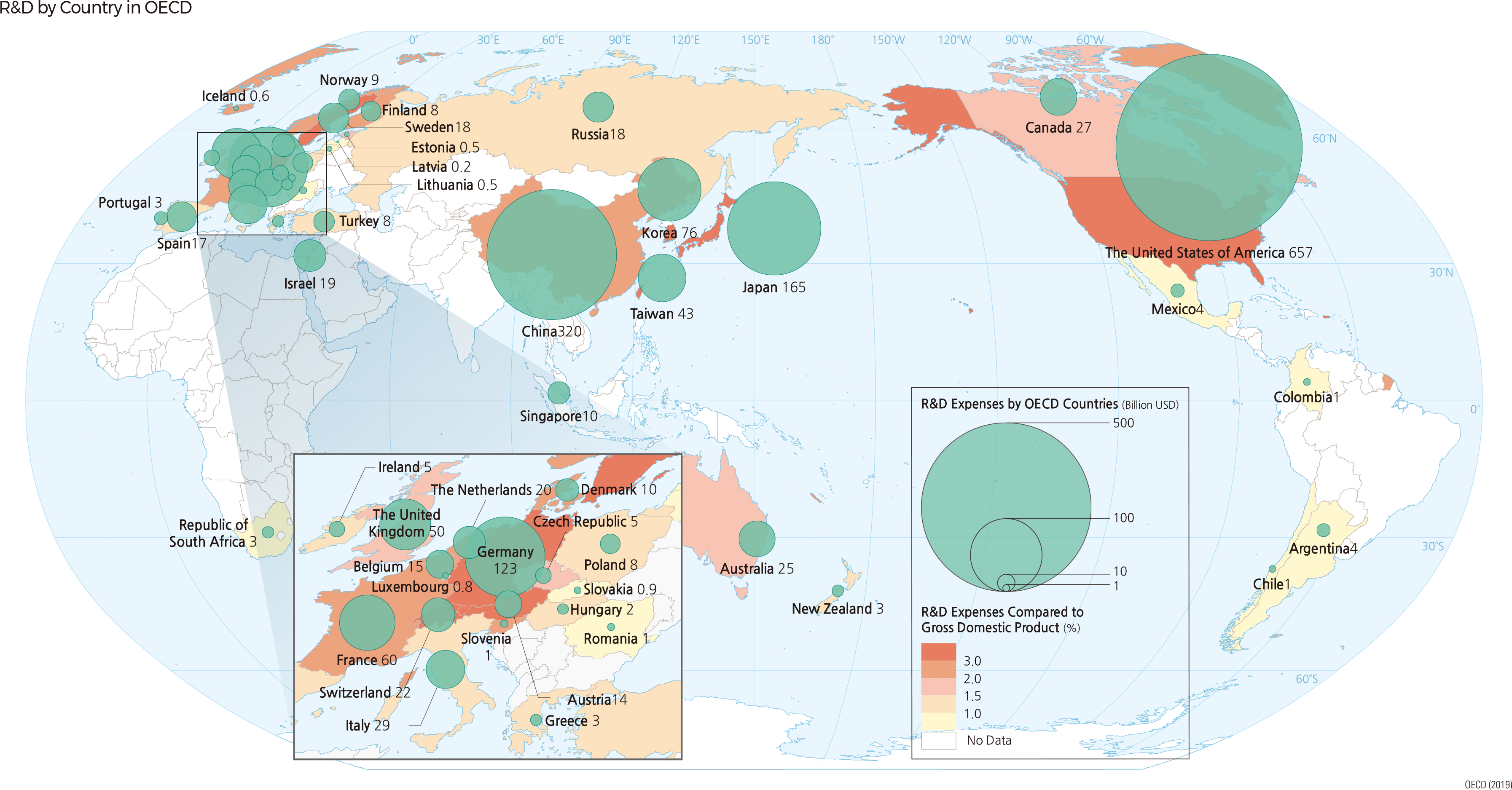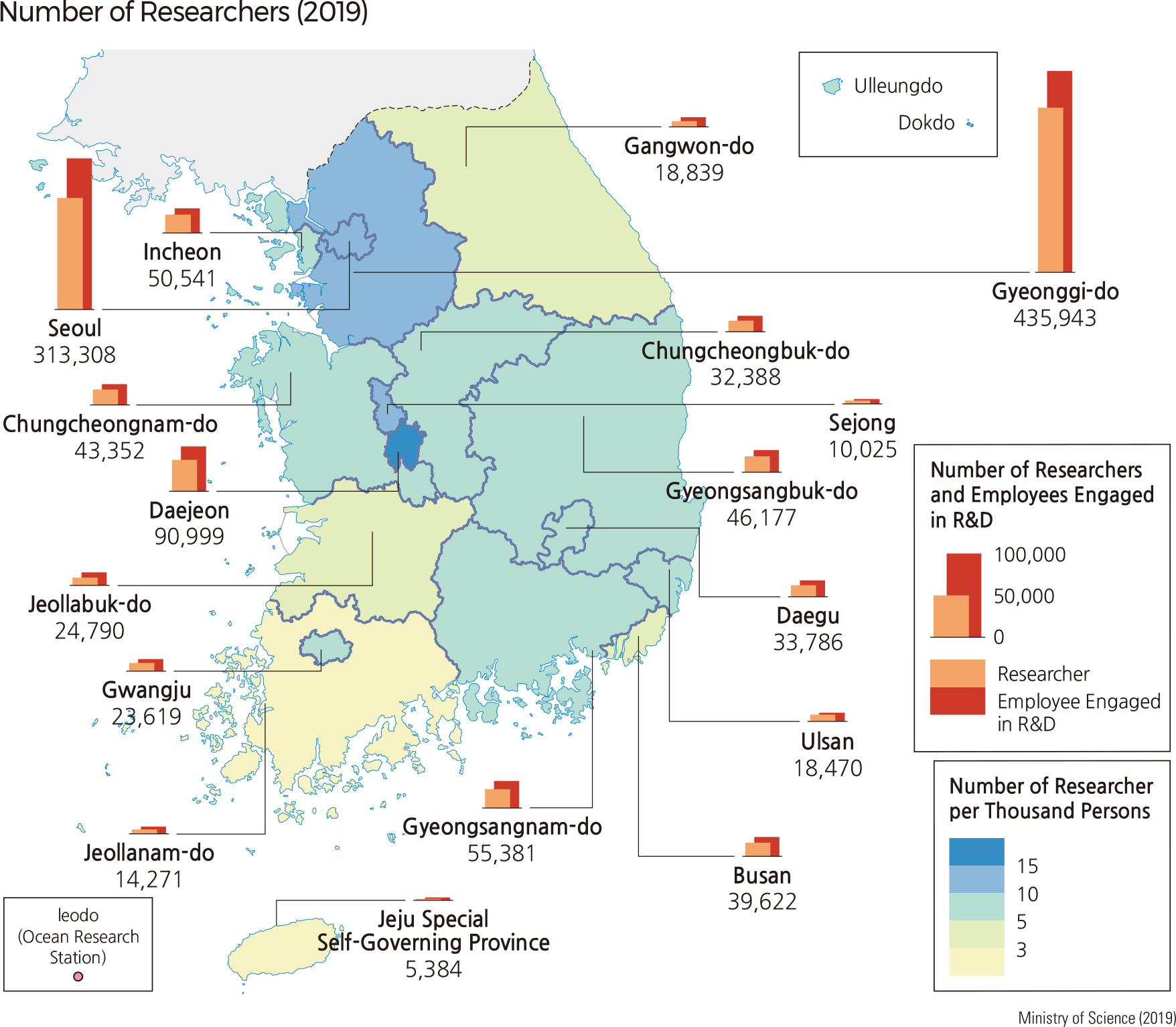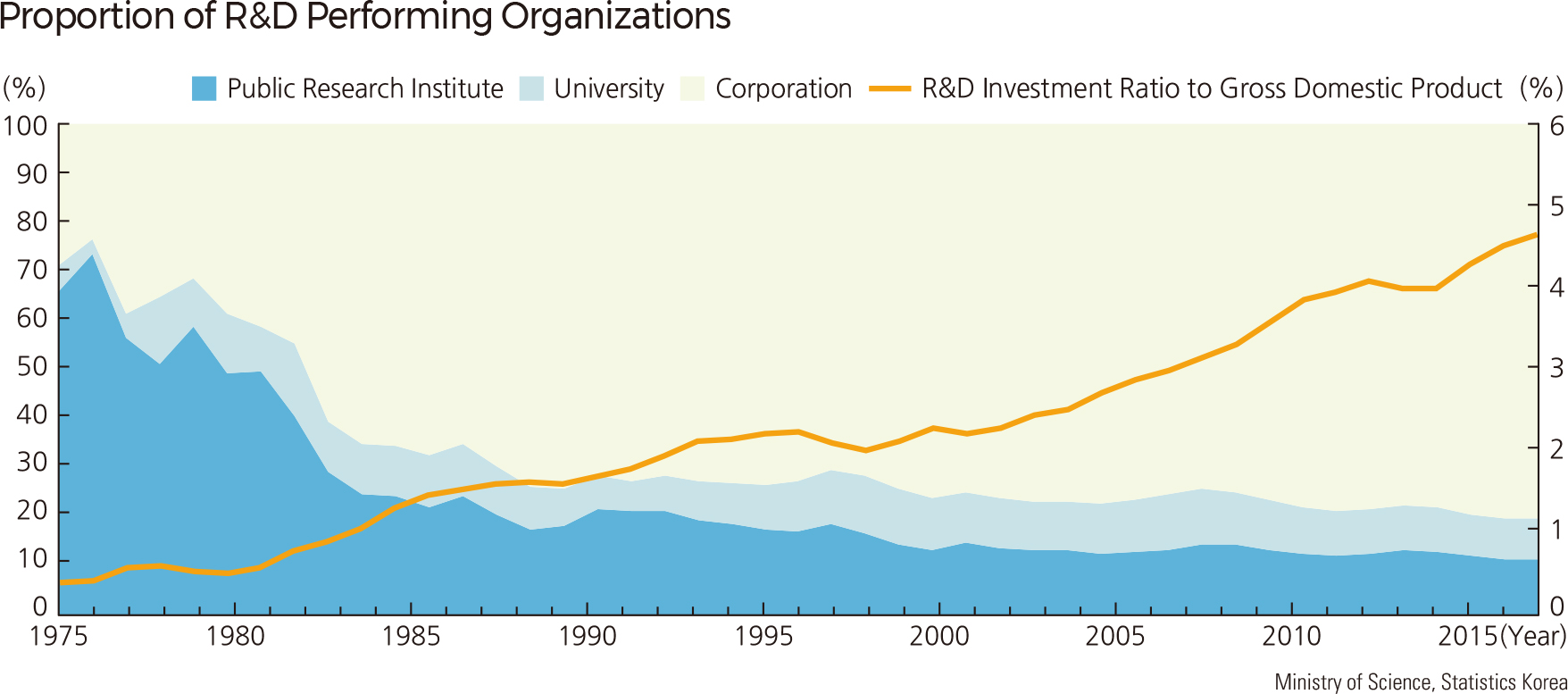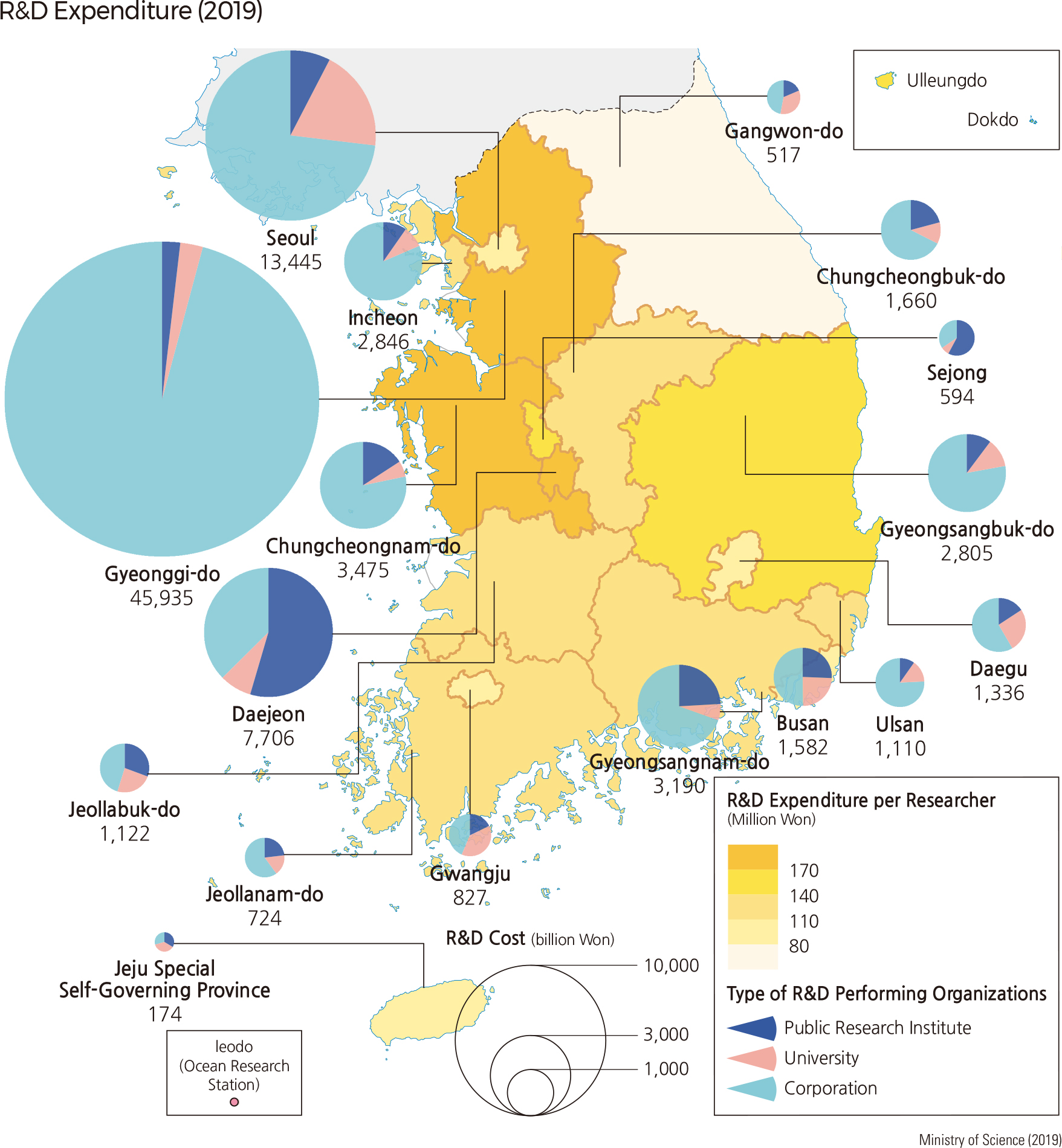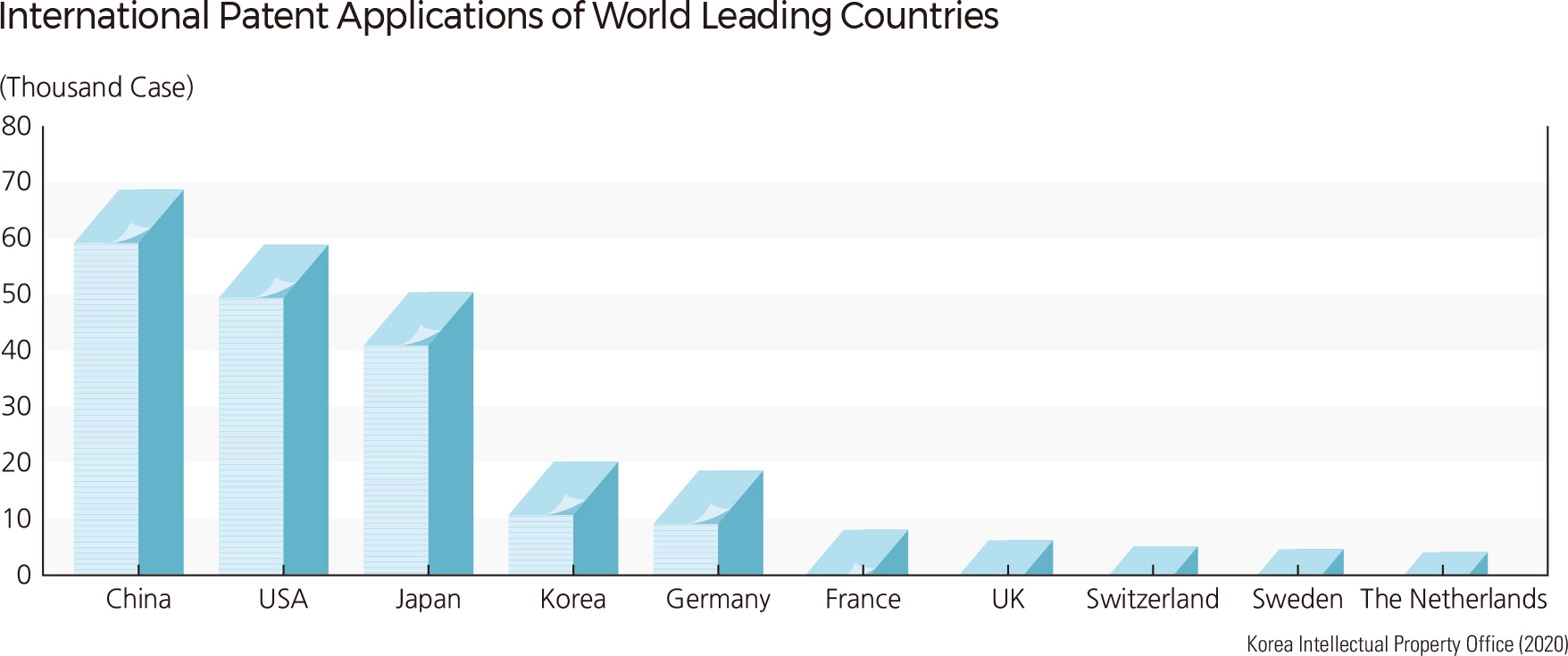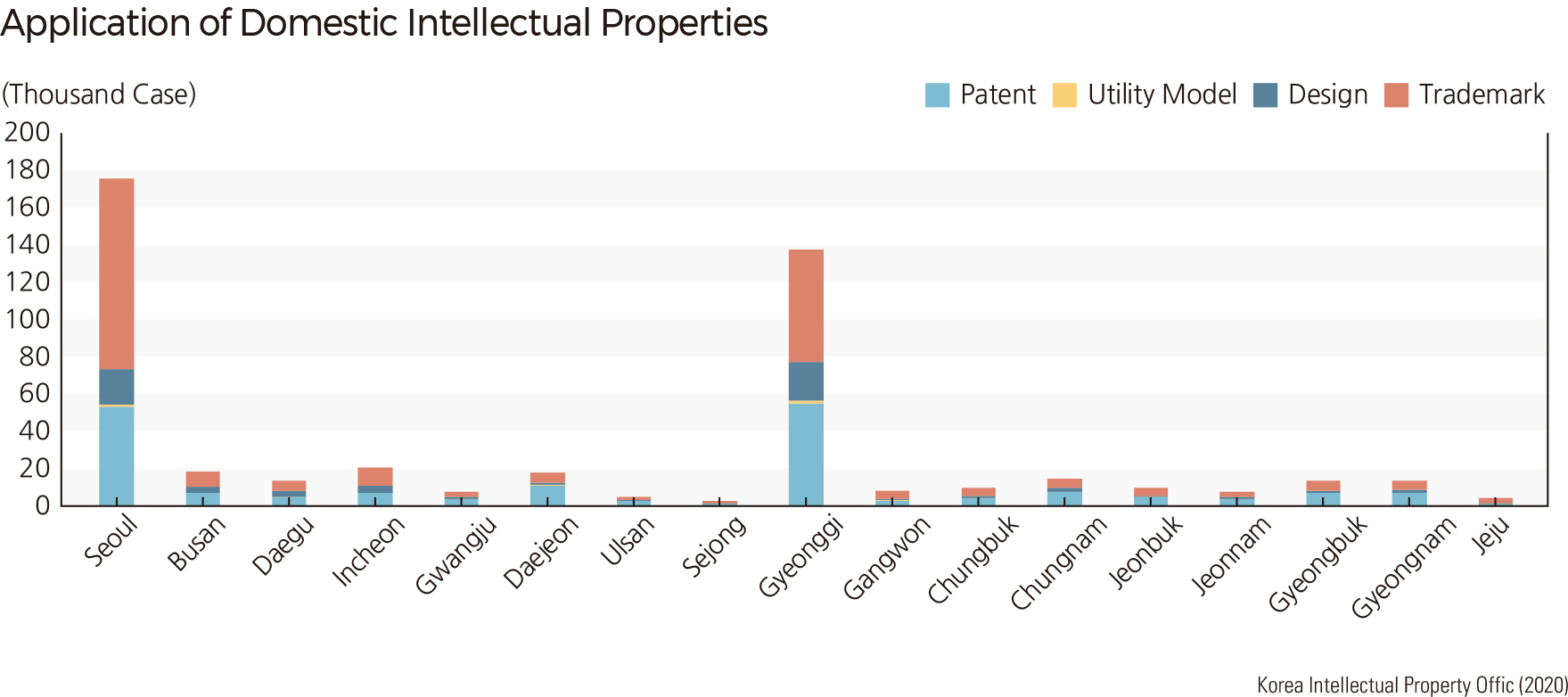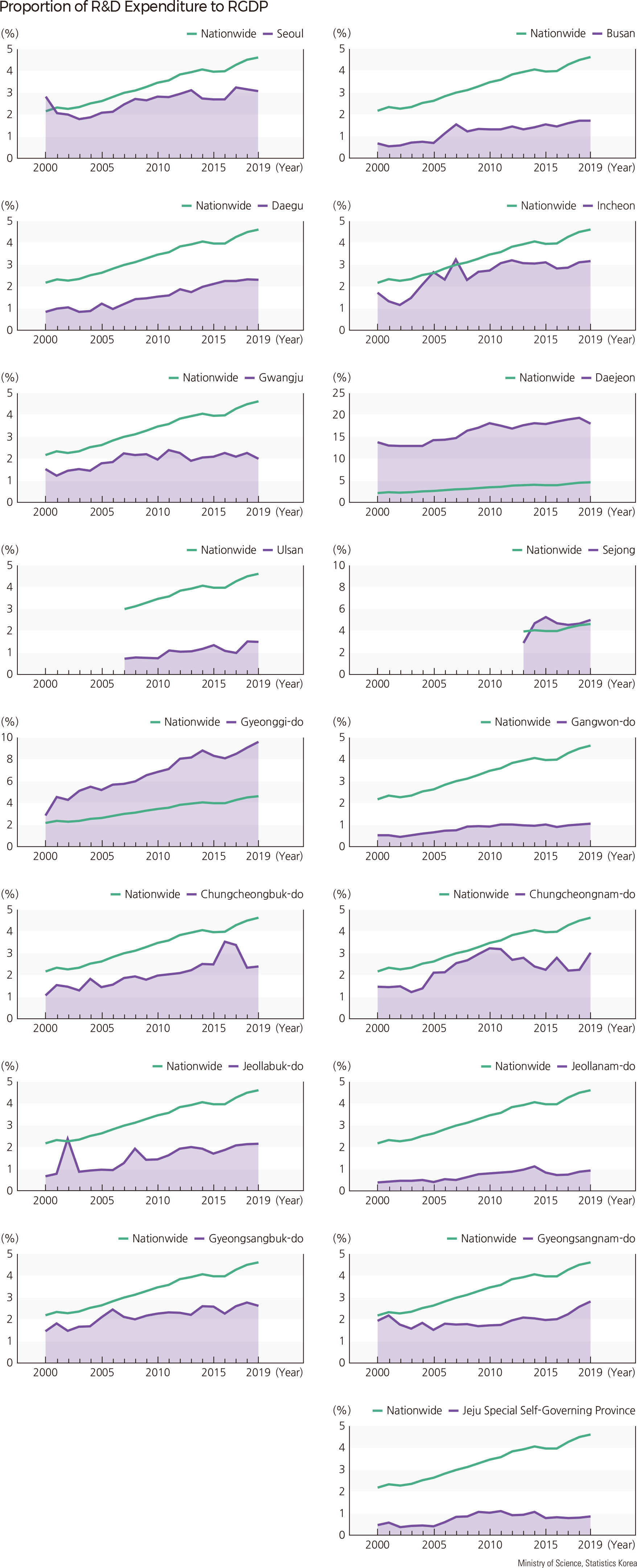English III 2021
Since the 1980s, Korea’s industry has been transformed into an innovation-led industrial structure through technology investments and advanced technology, as well as human resource development. In 2019 the R&D ratios to GDP among OECD countries reveal that Israel is currently in first place at 4.2%, with South Korea in second place at 4.6%, followed by Taiwan (3.5%), Sweden (3.5%), Japan (3.2%), Austria (3.2%), Switzerland (3.2%), Germany (3.2%), and the United States (3.1%). A review of the R&D performing organizations shows that in the 1970s, over half of them were public research institutions. However, starting in 1980, the proportion of private enterprises increased rapidly, and after 1989, they accounted for more than 70%. In 2019 the proportion of public research organizations accounted for 11.4%, private enterprises accounted for 80.3%, and universities accounted for 8.3%. An examination of R&D performing organizations by region shows that most R&D organizations are located in the Seoul Metropolitan Area of Gyeonggi-do (34.9%) and Seoul (24.0%), followed by Incheon (5.9%), Gyeongsangnam-do (4.8%), and Busan (4.4%). The locations with the greatest number of researchers per thousand Persons are Daejeon (25.0 persons), Gyeonggi-do (14.4 persons), Seoul (13.3 persons), Sejong (12.7 persons), and Chungcheongnam-do (8.4 persons). The numbers for local research and development personnel also appear similar to the numbers for researchers by region. Daejeon had the most R&D personnel per thousand persons at 35.9 persons, followed by Seoul (18.0 persons), Gyeonggi-do (17.6 persons), Sejong (16.8 persons), Chungcheongbuk-do (11.6 persons), and Chungcheongnam-do (11.4 persons). In the R&D investment trends, the share of R&D to GDP increased from less than 1% in the early 1980s to 2% in the 1990s and continued to rise, accounting for 4.6% in 2019. According to the proportion of R&D to regional GDP, all metropolitan areas and provinces, except Daejeon and Gyeonggi-do, did not reach the national average. Since 1973 the Ministry of Science and Technology has invested 30 trillion won in Yuseong-gu in Daejeon and established Korea’s first intensive scientific technology and research park in the Daedeok Research Complex. As a result, R&D expenses in the Daejeon area accounted for 13.8% of the regional GDP in 2000 and continued to increase to 18.0% in 2019. Meanwhile, through vigilant attention to technology-intensive enterprises after the 1997 financial crisis, Gyeonggi-do significantly increased R&D investment throughout the 2000s. Statistically, the R&D ratio to GDP was 2.8% in 2000, but by 2019 it had increased significantly to 9.6%. In particular, in terms of per capita R&D expenditure by metropolitan area and province, the highest region was from Gyeonggi-do (234.4 million won), followed by Daejeon (206.3 million won), Chungcheongnam-do (189.0 million won), Gyeongsangnam-do (143.6 million won), and Sejong (141.5 million won). Korea is the world’s fourth-largest country in terms of the number of international patent applications in 2020 at 20,059 cases, following China (68,707 cases), the United States (56,881 cases), and Japan (50,527 cases). Also, the number of patents granted has increased dramatically from 1,632 cases in 1980 to 134,766 cases in 2020. In terms of the number of patent applications by metropolitan and province, Gyeonggi-do (30.3%) had the most patent applications volume in 2020, followed by Seoul (29.4%), Daejeon (6.0%), and Chungcheongnam-do (4.0%). |
